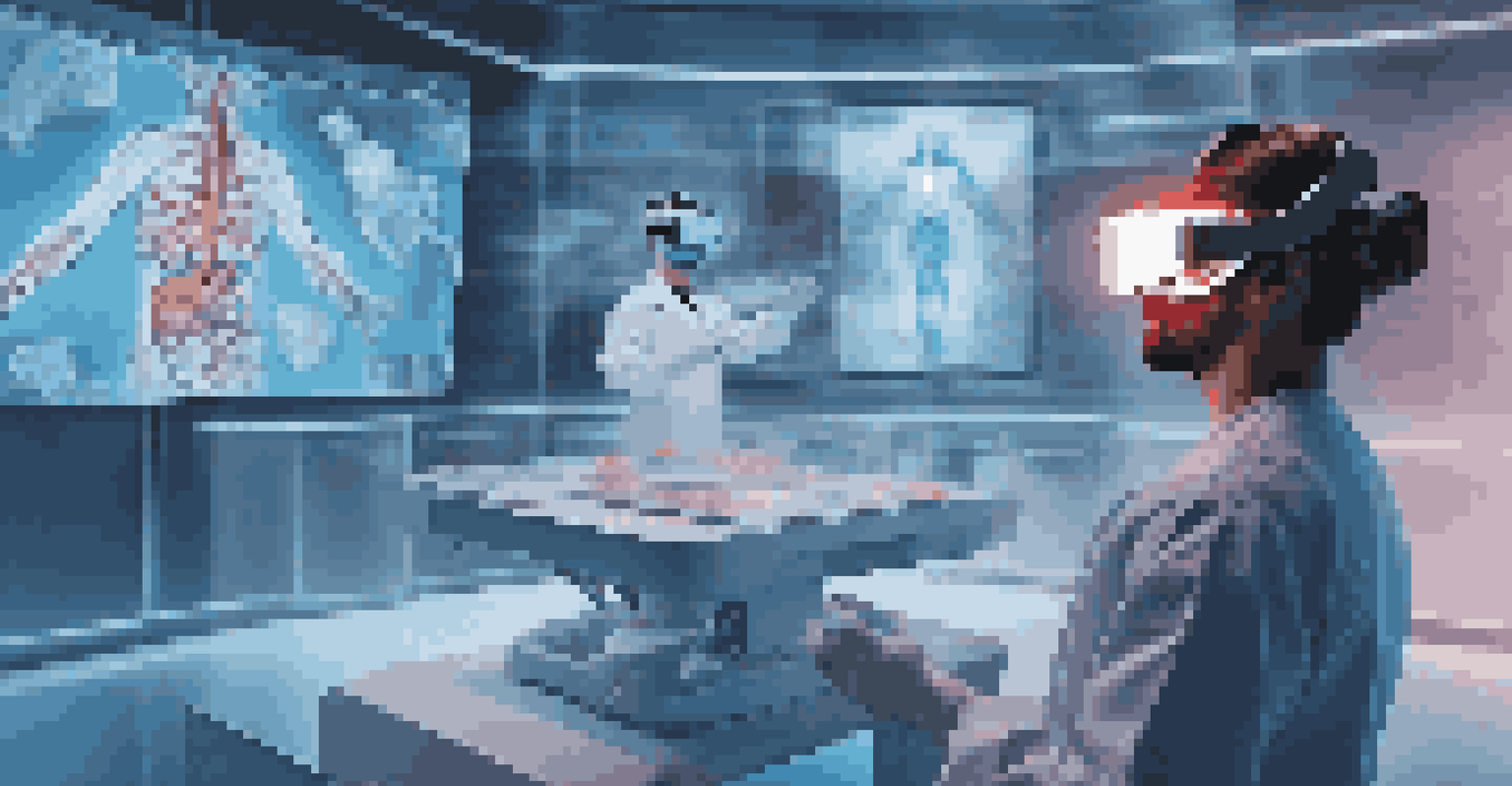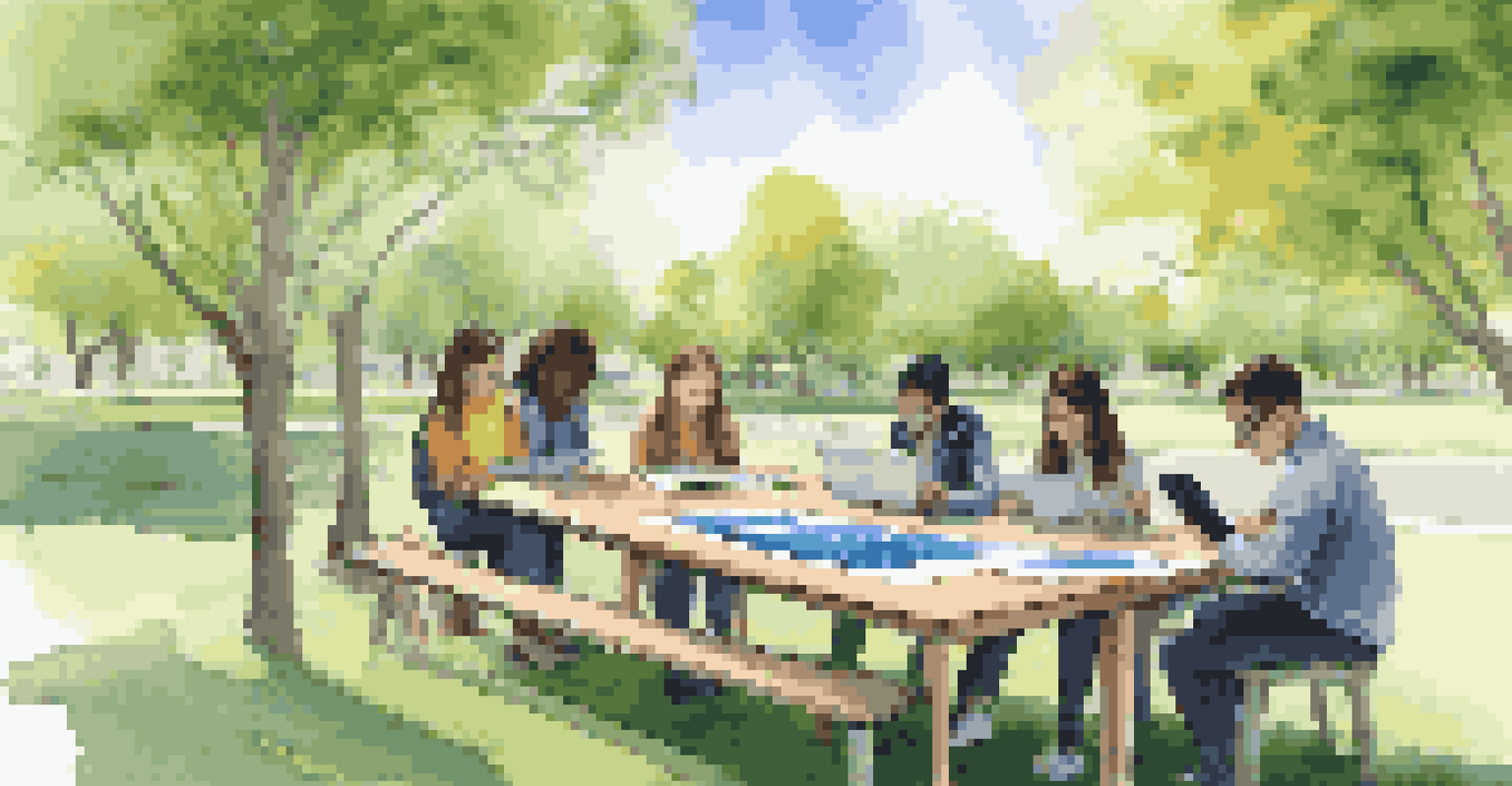Adaptive Learning: Integrating AR and VR for Immersive Education

Understanding Adaptive Learning in Education
Adaptive learning is a personalized approach to education that tailors the learning experience to individual needs. Imagine a classroom where each student learns at their own pace, with content that adjusts based on their understanding and progress. This method not only boosts engagement but also helps in retaining information more effectively.
Education is not the filling of a pail, but the lighting of a fire.
By utilizing data and analytics, adaptive learning platforms can identify students' strengths and weaknesses. For instance, if a student struggles with math, the system will provide additional resources and exercises specifically designed to address those gaps. This personalized feedback loop is key to fostering a deeper understanding of the material.
As educational technology advances, integrating adaptive learning with immersive technologies like AR (Augmented Reality) and VR (Virtual Reality) opens up exciting possibilities. These tools create interactive environments that can further enhance the adaptive learning experience, making lessons not just informative but also unforgettable.
The Role of AR in Enhancing Learning Experiences
Augmented Reality layers digital information on the real world, creating a unique learning experience. Picture a biology lesson where students can see a 3D model of the human heart overlaid on their desk, allowing them to explore its structure in real-time. This hands-on approach makes complex concepts more relatable and easier to grasp.

AR can also facilitate collaborative learning. For example, students can work together on a project, using AR tools to visualize and manipulate data in real-time. This not only encourages teamwork but also helps learners develop critical thinking skills as they navigate challenges together.
Adaptive Learning Personalizes Education
Adaptive learning tailors the educational experience to individual student needs, enhancing engagement and retention.
Moreover, AR can adapt to individual learning styles. Some students might benefit from visual aids, while others may prefer interactive simulations. By providing various ways to engage with content, AR ensures that each learner can access information in a manner that suits them best.
Exploring the Power of VR in Education
Virtual Reality immerses students in entirely new environments, offering experiences that traditional classrooms simply cannot match. Imagine students taking a virtual field trip to ancient Rome, walking through its streets, and interacting with historical figures. This level of engagement can spark curiosity and a love for learning.
The great aim of education is not knowledge but action.
VR also allows for experiential learning, where students can practice skills in a safe and controlled environment. For instance, medical students can perform virtual surgeries, gaining hands-on experience without the risks associated with real-life procedures. This not only builds confidence but also enhances their practical knowledge.
Additionally, VR can cater to various learning speeds and preferences. In a VR scenario, students can pause, rewind, or replay experiences to ensure they fully comprehend the material. This flexibility empowers learners to take control of their education, making learning a more personal journey.
Integrating AR and VR into Adaptive Learning Platforms
Combining AR and VR with adaptive learning creates a powerful educational synergy. These technologies can be seamlessly integrated into learning platforms, providing tailored experiences that respond to individual progress. For example, if a student excels in a particular area, the platform can present more advanced AR or VR challenges to further their understanding.
Such integration not only enhances engagement but also provides real-time feedback. As students interact with AR or VR content, the system can monitor their responses and adjust the difficulty level accordingly. This dynamic approach ensures that learners are continually challenged and supported based on their unique needs.
AR and VR Enhance Learning Experiences
Augmented Reality and Virtual Reality create immersive learning environments that cater to diverse learning styles and promote collaboration.
Moreover, this combination can foster a sense of achievement among students. When they successfully navigate an AR simulation or complete a VR task, they receive immediate recognition, reinforcing their motivation to learn. This positive reinforcement is crucial for maintaining interest and encouraging persistence in their educational journey.
Benefits of Immersive Education with AR and VR
The integration of AR and VR into education offers numerous benefits, including enhanced engagement and improved retention rates. Students often find these immersive experiences more enjoyable, which can lead to increased motivation and participation in lessons. When learning feels like an adventure, students are more likely to embrace challenges.
Moreover, immersive education caters to diverse learning styles, accommodating visual, auditory, and kinesthetic learners alike. For instance, while some students grasp concepts better through visual simulations, others may benefit from hands-on activities in a virtual space. This inclusivity fosters a more equitable learning environment where every student can thrive.
Finally, the use of AR and VR prepares students for a technology-driven future. As these tools become more prevalent in various industries, familiarity with them can give learners a competitive edge. By incorporating these technologies into education, we are equipping students with the skills they need to succeed in an evolving workforce.
Challenges in Implementing AR and VR in Education
Despite the exciting potential of AR and VR in education, there are challenges to consider. One significant hurdle is the cost of technology and resources. Not all schools have the budget to invest in the necessary hardware or software, which can create disparities in access to these innovative learning tools.
Another challenge is the need for teacher training. Educators must be equipped with the skills to effectively integrate AR and VR into their teaching strategies. Without proper training, the technology may not be utilized to its full potential, limiting its effectiveness in enhancing the learning experience.
Challenges in Implementing Tech Tools
While AR and VR offer significant benefits in education, challenges such as cost, teacher training, and health concerns must be addressed.
Additionally, there may be concerns regarding screen time and health. Prolonged use of VR headsets or AR applications could lead to discomfort or eye strain for students. Therefore, it’s essential to find a balance, ensuring that immersive learning experiences are effective without compromising student well-being.
The Future of Adaptive Learning with AR and VR
Looking ahead, the future of adaptive learning enriched by AR and VR is promising. As technology continues to evolve, we can expect even more innovative applications that will transform the educational landscape. For instance, advancements in artificial intelligence could lead to more sophisticated adaptive learning algorithms that personalize every aspect of a student's journey.
Moreover, as AR and VR technologies become more accessible, schools and educational institutions are likely to embrace these tools in greater numbers. This widespread adoption could revolutionize traditional teaching methods, making learning more interactive and engaging for students of all ages.

Ultimately, the integration of AR and VR into adaptive learning represents a shift towards a more personalized and immersive educational experience. As we continue to explore and invest in these technologies, we pave the way for a future where learning is not just a task but an exciting adventure that inspires curiosity and fosters lifelong learning.